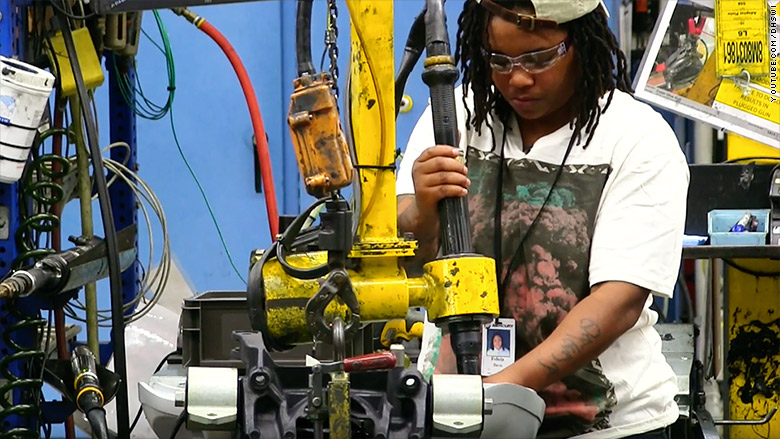
$1 billion a year for job training sure sounds like a lot of money.
That's how much Congressional Republicans want to give states to help food stamp recipients find work. It's a huge increase over the $90 million in federal funding that currently flows to state training programs for those in the Supplemental Nutrition Assistance Program, or SNAP, as food stamps is formally known.
The investment -- part of the House 2018 farm bill -- is historic, say GOP lawmakers.
"The farm bill also keeps faith with [the most vulnerable] families by not only maintaining SNAP benefits, but by offering SNAP beneficiaries a springboard out of poverty to a good paying job and opportunity for a better way of life for themselves and their families," House Agriculture Committee Chairman Michael Conaway, a Republican from Texas, said when he introduced the legislation earlier this month.
Consumer advocates and workforce development experts, however, counter that the funding is nowhere near enough to cover training for all the food stamp recipients who would be newly subject to work requirements under the farm bill, which is working its way through the House. They argue that states would not be able to set up quality programs that would prepare all these low-income Americans for good jobs and self-sufficient lives, which is the GOP's stated mission.
Currently, able-bodied adults ages 18 to 49 who don't have minor children must work or enroll in a training program for 20 hours a week to receive benefits for more than three months every three years. About 3.5 million of the roughly 41 million people who receive food stamps are subject to this provision.
The farm bill would broaden the number of people who have to work. It would require those in their 50s to have jobs or enroll in training and it would extend the mandate to parents with school-age children, starting in fiscal 2021. (Most working-age adults who are not disabled or pregnant must currently register for work, accept a job if offered or maintain their current position if they are employed.) This could double the number of people subject to work requirements, according to the Congressional Budget Office.
Related: House GOP bill would lock the poor out of food stamps if they don't work
The legislation would also pump more money into training. Currently, every state is required to run an employment and training program, known as E&T, to help food stamp recipients search or prepare for jobs. The federal government now provides $90 million, allocated through a grant process, for these programs, but additional funding is available for states that provide extra services. The programs vary widely, with some states simply offering assistance in job hunting and others providing intensive employment training.
Under the bill, which faces a difficult path ahead in Congress, states would get $1 billion for training, but would have to guarantee a slot in their E&T programs for every recipient affected by the work mandate. This could nearly quadruple the total number of people enrolled in state training programs to 750,000 a month, according to a House Agriculture Committee aide.

The bill would triple the amount invested in each recipient, the aide said, noting this level of funding has never been authorized before.
"It's a step in the right direction," the aide said. "The status quo isn't working. This is a significant and historic investment to provide folks with opportunities."
Related: Trump signs executive order pushing work requirements for the poor
Still, states would need even more money to offer meaningful training, advocates say.
The farm bill's funding amounts to just $30 per person per month, according to the left-leaning Center on Budget and Policy Priorities. That's only enough to pay for services, such as a self-administered employment assessment or the use of computers and copiers at a job center, for example.
"You can do just about nothing for $30," said LaDonna Pavetti, vice president for family income support policy at the center.
By contrast, the work programs for another federal safety net initiative, Temporary Assistance for Needy Families, or TANF, spends $414 per person per month in the typical state. And more intensive training efforts that have proven effective at raising people's incomes and putting them on a career path can cost between $8,300 and $14,000 per person. Some, for instance, prepare participants for specific fields, such as IT or health care, while others may concentrate on teaching skills such as time management, conflict resolution and goal setting.
"They focus on building skills and creating a set of support services around a person to get them to succeed," Pavetti said.
Related: Republicans' new welfare reform focus: Low-income men
Also, most states are not equipped to ramp up their E&T programs to such a level, even though the farm bill gives them two years to do so, said Kermit Kabela, federal policy director at the National Skills Coalition, which focuses on workforce development. And if states stumble, some low-income Americans may not be able to meet their work requirements and could lose a vital federal safety net.
"It's not the worst idea that ever came out, but if you think about how this would actually play out on the ground, it raises a lot of questions," Kabela said. "You can't magically create good training programs overnight."


